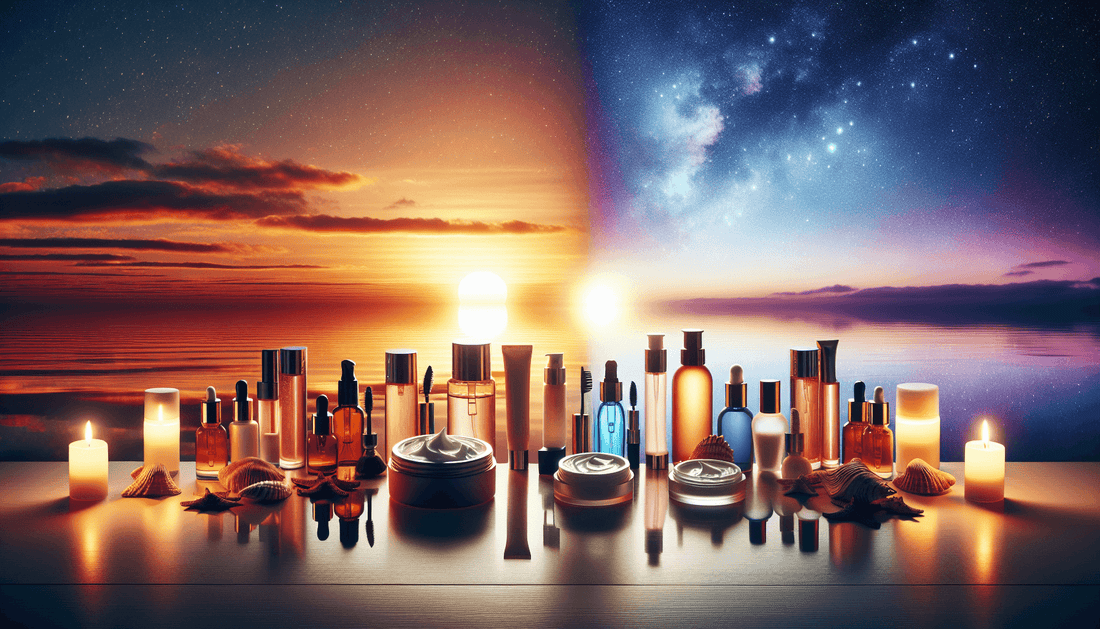
Morning vs. Night Skincare Routines: What You Should Know
Share
The Science Behind Day and Night Skincare Differences
Your skin undergoes distinct biological processes throughout the 24-hour cycle. During daylight hours, your skin's primary function shifts to defense mode—actively protecting against environmental aggressors like UV radiation, pollution, and free radicals. Conversely, nighttime triggers your skin's regeneration mechanisms, accelerating cell turnover and repair processes substantially compared to daytime hours.
This circadian rhythm directly influences your skin's permeability, sebum production, and microcirculation patterns. Studies have shown that transepidermal water loss peaks in the evening, making nighttime the opportune moment for intensive hydration. Understanding these fluctuations is fundamental to optimizing your skincare regimen for maximum efficacy.
How Your Skin Changes From Day to Night
Morning skin typically exhibits less oil production and slightly elevated pH levels. By evening, your skin's barrier function decreases, allowing both water loss and enhanced absorption of active ingredients. This nocturnal permeability spike creates the perfect window for treatment-focused products to penetrate deeper layers of the epidermis.
Additionally, skin temperature rises slightly during sleep, further facilitating product absorption. This physiological variance explains why identical products applied at different times may yield dramatically different results.
Essential Morning Skincare Steps for Protection
Your AM routine should focus primarily on fortifying your skin's natural defenses before environmental exposure. Begin with a gentle cleanser—morning cleansing needn't be as intensive as evening purification since your skin hasn't accumulated significant impurities overnight.
Follow with antioxidant-rich serums containing ascorbic acid (vitamin C) or niacinamide to neutralize free radicals before they trigger oxidative damage. These protective ingredients create an invisible shield that works synergistically with your sunscreen—the non-negotiable final step in any morning regimen.
Morning-Specific Products Worth Investing In
Look for formulations containing these morning-appropriate active ingredients:
- Vitamin C serums (10-20% concentration) for antioxidant protection
- Hydrating hyaluronic acid products that won't feel heavy under makeup
- Lightweight moisturizers with ceramides to reinforce barrier function
- Broad-spectrum SPF 30+ (minimum) with both UVA and UVB protection
The ideal morning product texture tends toward lightweight formulations that layer comfortably beneath sunscreen and cosmetics. Reserve heavier emollients for your PM routine when absorption time isn't constrained.
Night Skincare Routines for Repair and Renewal
Evening skincare represents your opportunity to implement more aggressive treatment strategies. Begin with thorough double-cleansing to remove accumulated environmental pollutants, sebum, and sunscreen residue. This cleansing diligence ensures subsequent products won't be impeded by surface debris.
Nighttime provides the optimal window for introducing actives like retinoids, chemical exfoliants, and peptide complexes. Your skin's enhanced permeability after sunset allows deeper penetration of these transformative ingredients.
"Nighttime is when your skin undergoes its most intensive repair cycle. Supporting this natural process with well-chosen actives can dramatically accelerate results." – Dr. Whitney Bowe, Dermatologist
Powerful Night-Specific Ingredients and When to Apply Them
The evening presents the ideal opportunity for incorporating potent actives that might otherwise increase photosensitivity:
| Ingredient | Benefits | Application Timing |
|---|---|---|
| Retinol/Retinoids | Cell turnover, collagen stimulation | Early evening, after cleansing |
| AHAs/BHAs | Exfoliation, texture improvement | PM only, not with retinoids |
| Peptide Complexes | Cellular communication, repair | Evening, compatible with most actives |
Allow approximately 30 minutes between applying potent actives and subsequent steps to maximize their efficacy before layering additional products.
Creating a Customized Routine for Glowing Skin
While understanding timing principles is crucial, personalizing your regimen to address your unique skin concerns remains paramount. Evaluate your predominant skin conditions—dehydration, sensitivity, hyperpigmentation, or aging concerns—and select products that target these specific issues for their appropriate time window.
Consistency trumps complexity. A simplified routine performed faithfully will yield superior results compared to an elaborate protocol followed sporadically. Begin with foundational elements (cleansing, hydration, protection) before gradually introducing specialized treatments.
Common Questions About Timing Your Skincare
When should you apply retinol? Always reserve retinoid application for evening use. Their photosensitizing properties make daytime use counterproductive, potentially causing more damage than benefit. Apply to completely dry skin approximately 30 minutes after cleansing for optimal penetration while minimizing irritation potential.
Is it necessary to have entirely different AM and PM routines? While some overlap may exist (particularly with gentle cleansers or basic hydrators), maximum efficacy requires some differentiation between morning and evening protocols. At minimum, your AM routine should include antioxidant protection and sunscreen, while your PM regimen should emphasize deeper cleansing and treatment-focused ingredients.
Remember that your skin's needs fluctuate seasonally and with age. The regimen that delivers radiance today may require refinement as environmental conditions or hormonal influences evolve. Regular reassessment ensures your approach remains optimally aligned with your skin's current requirements.
